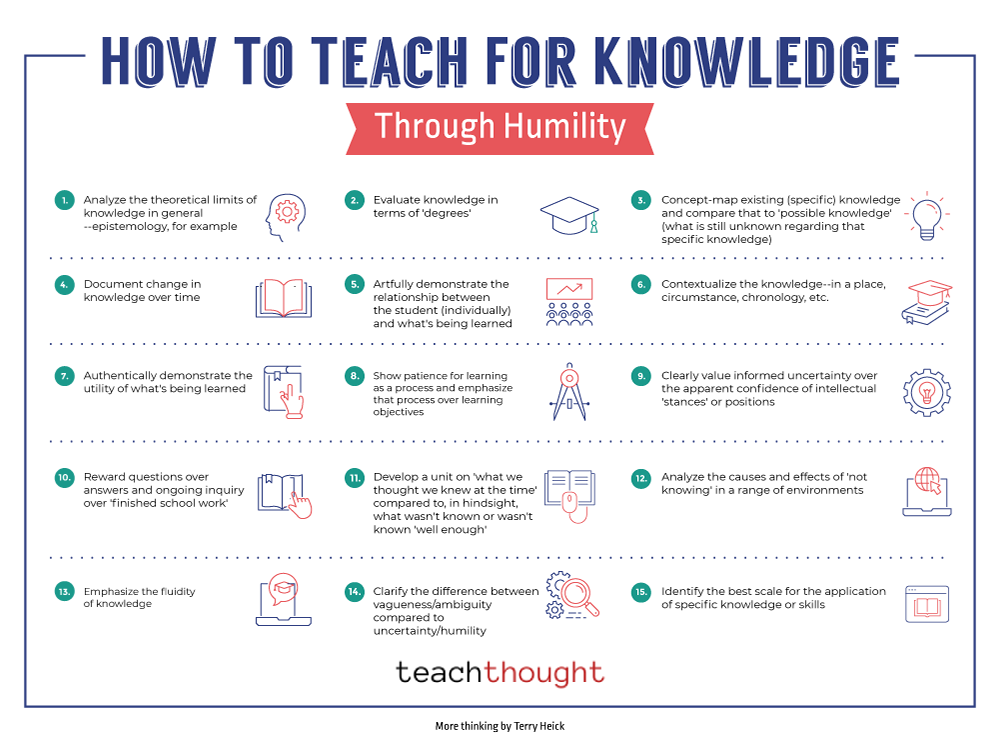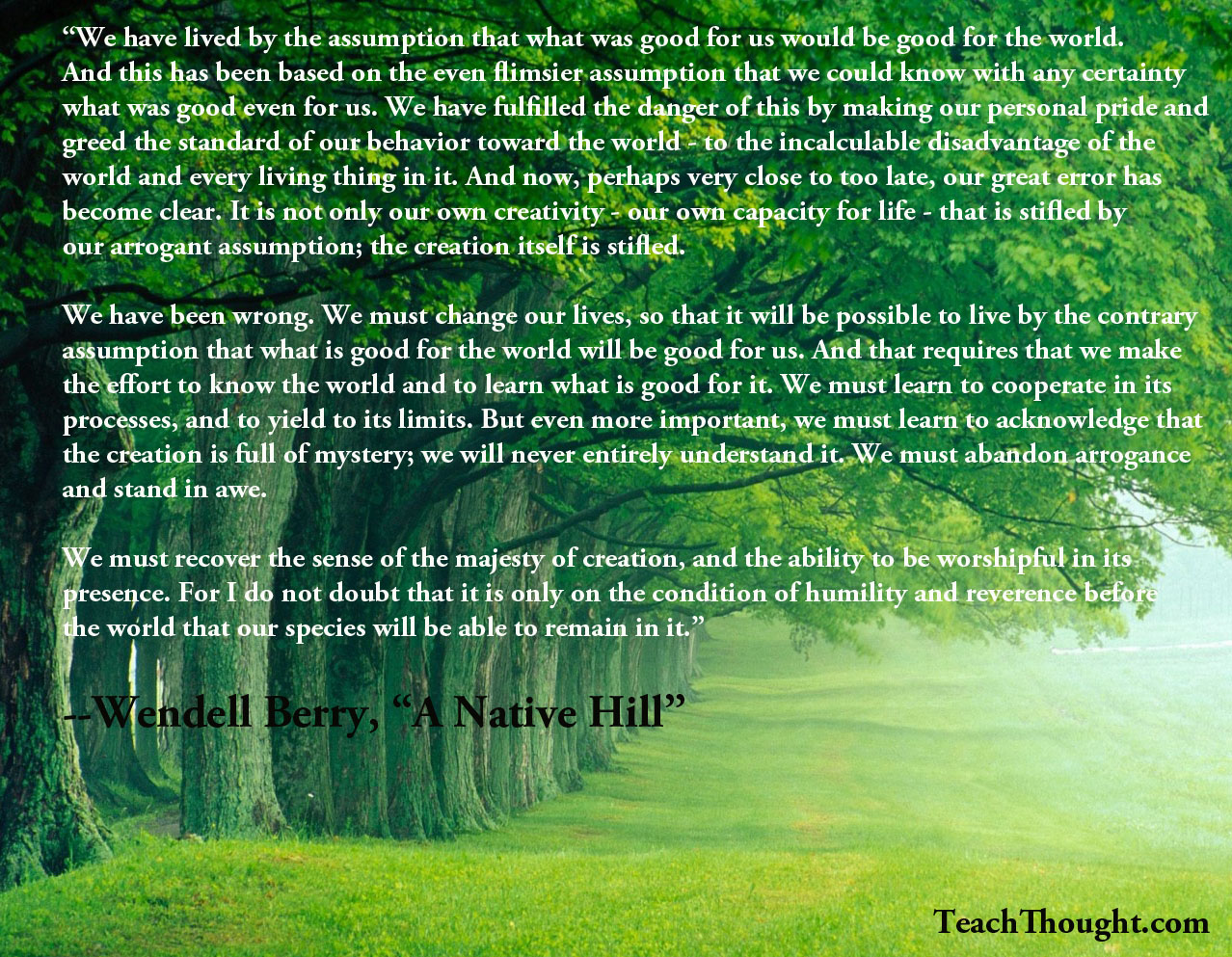

by Terry Heick
Humbleness is an interesting starting factor for knowing.
In a period of media that is digital, social, chopped up, and constantly recirculated, the difficulty is no longer access however the quality of access– and the response to after that evaluate uncertainty and “reality.”
Discernment.
On ‘Understanding’
There is an alluring and deformed feeling of “recognizing” that can bring about a loss of reverence and also entitlement to “know things.” If absolutely nothing else, contemporary innovation gain access to (in much of the world) has replaced nuance with phenomenon, and process with accessibility.
A mind that is effectively observant is likewise correctly modest. In An Indigenous Hillside , Wendell Berry points to humbleness and restrictions. Standing in the face of all that is unknown can either be frustrating– or enlightening. Exactly how would certainly it change the discovering process to begin with a tone of humility?
Humbleness is the core of critical thinking. It states, ‘I don’t recognize sufficient to have an enlightened point of view’ or ‘Let’s find out to lower uncertainty.’
To be self-aware in your own expertise, and the limitations of that understanding? To clarify what can be understood, and what can not? To be able to match your understanding with a genuine demand to know– job that normally enhances crucial thinking and sustained questions
What This Resembles In a Class
- Evaluate the restrictions of expertise in simple terms (a straightforward intro to epistemology).
- Evaluate expertise in degrees (e.g., certain, potential, possible, not likely).
- Concept-map what is presently understood regarding a details subject and compare it to unanswered inquiries.
- Paper exactly how knowledge modifications in time (personal knowing logs and historical pictures).
- Show how each student’s perspective shapes their connection to what’s being learned.
- Contextualize understanding– place, scenario, chronology, stakeholders.
- Show authentic energy: where and how this knowledge is used outdoors school.
- Show perseverance for learning as a process and stress that process together with purposes.
- Clearly value informed unpredictability over the confidence of quick conclusions.
- Compensate recurring inquiries and follow-up examinations more than “ended up” answers.
- Develop an unit on “what we believed we understood then” versus what hindsight shows we missed.
- Assess domino effects of “not knowing” in scientific research, background, public life, or day-to-day decisions.
- Highlight the fluid, developing nature of understanding.
- Separate vagueness/ambiguity (lack of clearness) from uncertainty/humility (recognition of limitations).
- Recognize the very best scale for using particular knowledge or abilities (person, regional, systemic).
Research Keep in mind
Study reveals that individuals who exercise intellectual humility– wanting to admit what they don’t recognize– are a lot more open to learning and much less most likely to cling to false certainty.
Resource: Leary, M. R., Diebels, K. J., Davisson, E. K., et al. (2017 Cognitive and social attributes of intellectual humility Character and Social Psychology Bulletin, 43 (6, 793– 813
Literary Example
Berry, W. (1969 “An Indigenous Hillside,” in The Long-Legged Residence New York: Harcourt.
This concept may appear abstract and level of area in progressively “research-based” and “data-driven” systems of discovering. Yet that is part of its worth: it helps students see understanding not as repaired, yet as a living process they can join with treatment, evidence, and humbleness.
Teaching For Knowledge, Understanding Through Humility

